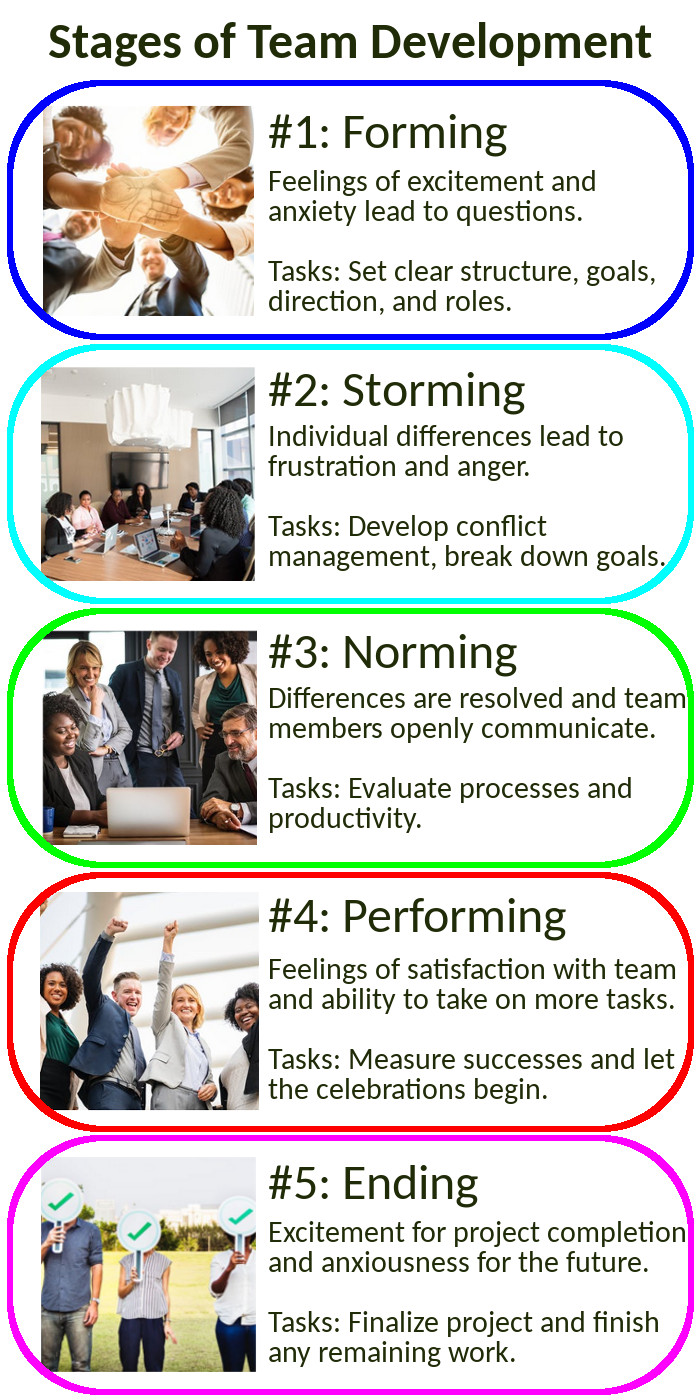
First Stage of Team Development: The Blind Date (Forming)
This one aspect of teaming described here, the stage of development, is based on the work with scores of teams over the past 20 years, plus the research of such notables as Bruce Tuckman and Will Schultz.
All stages need to be experienced to reach a high-performance level. You can't short-circuit the process. The length of each stage depends on the people, their attitudes, the leader, and the culture of the organisation.
In the first stage of forming, called the blind date because it's much like that first encounter, there is caution in relationships with polite and superficial communication. You try to figure out if you belong or want to belong, to this group. You wonder what your role is and who has the power. There's a high need for belonging. Performance is often low at this stage.
The leader's role in the first stage is to simply let the group discover — each other and the answers to their questions. Pairing within the group occurs, and Schultz says the stronger the pairs, the stronger the sense of inclusion. The leader needs to encourage this pairing and engage people in projects that help bonding.
Second Stage of Team Development: The Storm (Storming)
So, you like each other enough to have a second date! Inevitably the storm comes. The unavoidable, painful stage where conflicts emerge… the first fight! Different personalities and different agendas lead to conflict. That old nemesis, control, rears its head as people vie for doing things "my way". Resistance, sometimes subtle, is also an issue at this stage. Trust level is low.
The leader's role here is critical. Your job is not to "fix" the conflict but rather to observe it and address it through asking questions and guiding the group (they are not a team at this stage) to resolve the conflict themselves. For example: "I've noticed some difficulty in you solving this problem today. What's going on?"
Follow their response with "How would you like to handle that?" This is the powerful teaching method Socrates used centuries ago. People "get it" from their own responses much more than when they are told something.
Much of the time spent in team development is spent in these first two stages. In more than a few cases, teams never emerge from their storming stage. Some groups get stuck and live there forever. Talk about pain!
Third Stage of Team Development: The Agreement (Norming)
Successful teams, however, progress to the next stage and create an agreement. At this level, there is more cohesion and flow of information because standards have been set as to how the team will operate. They clarify values, set parameters of meetings and decision-making, and take individual responsibility. While the leader's role in this stage is one of a coach, there's also more shared leadership based on who has the expertise of the moment.
Fourth Stage of Team Development: High Performance (Performing)
Finally comes the covenant. This is really the beginning of teams performing, because people have committed to come together to solve problems. There's synergy and spirit, individuals take initiative and the team has fun together. While there may still be conflict, it's generally short-lived because team members have trust, respect, and are willing to compromise. There's an openness in communication and a feeling of closeness that allow team members to see beyond the tasks to the outcomes they want.
The leader's role here is to simply "get out of the way": Check progress, support the work in process, and keep standards high.
While this high-performance stage is the ideal, you never stay there once and for all. As people come and go on the team, the dynamics will change, and you may go back to stage two or three. However, commitment to each other, plus knowing and working the process, will get you back to solving problems.
You cannot do things differently until you see things differently. These ideas can help you see the formation of teams in a new way, so you can lead and participate in your own teams on a deeper level!

Click here to view a overview of how teams develop through the different stages.